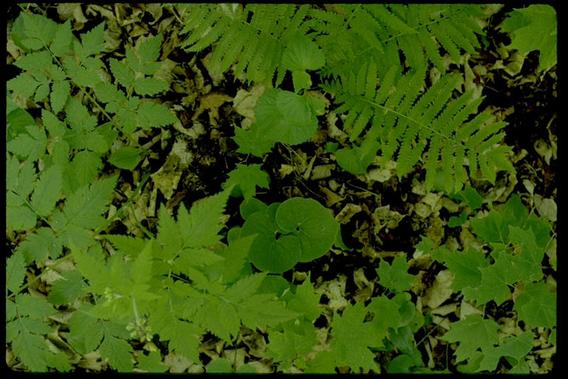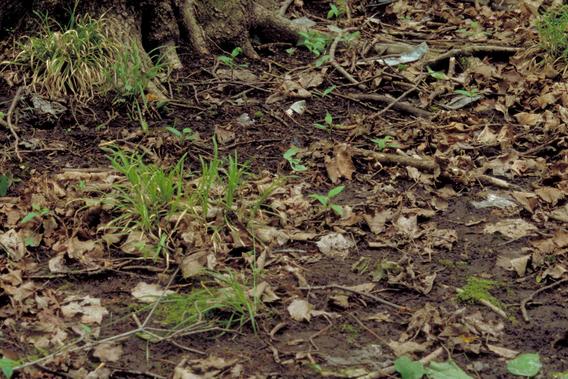Since 1998, two studies examining the effects of exotic earthworm invasion on plant diversity and tree seedling abundance have been conducted the Chippewa National Forest in northern Minnesota and the Chequamegon National Forest in central Wisconsin (See the Research section for more details).

|

|
Different plant species respond to earthworm invasions differently. Some native plants appear to be very sensitive, so much so, that they can rapidly disappear when earthworms invade a forest. Some examples of these plants include…
| Life Form | Latin (scientific) name | Common Name |
| Herbaceous plants | Aralia nudicaulis | Wild Sarsaparilla |
| Aralia racemosa | Spikenard | |
| Streptopus roseus | Twisted Stalk | |
| Uvularia sessilifolia | Wild Oats | |
| Uvularia grandiflora | Large-flowered Bellwort | |
| Polygonatum pubescens or Polygonatum commutatum |
Solomon’s Seal | |
| Aster macrophyllus | Virginia Waterleaf | |
| Hepatica americana | Round-lobed Hepatica | |
| Trientalis borealis | Star Flower | |
| Thalictrum dioicum | Early Meadow Rue | |
| Ferns - Fern Allies | Lycopodium obscurum | Round-branched Ground-Pine |
| Dryopteris species | Shield-Fern | |
| Tree Seedlings | Acer saccharum | Sugar Maple |
| Acer rubrum | Red Maple | |
| Ostrya virginiana | Ironwood | |
| Quercus rubra | Red Oak | |
| Tilia americana | Basswood / Linden | |
| Shrubs | Amelanchier species | Serviceberry |
In contrast, there are a few native plants species that do very well in the wake of earthworm invasions. Such as:
| Life Form | Latin (scientific) name | Common Name |
| Herbaceous plants | Arisaema triphyllum | Jack-in-the-pulpit |
| Smilacina racemosa | False Solomon’s Seal | |
| Grass-like plants | Carex pensylvanica | Pennsylvania sedge |
| Tree Seedlings | Fraxinus species | Ash |
The reasons for the different responses by different plant species to earthworm invasion is not completely clear, but evidence suggests that several other factors contribute to the affects we see following earthworm invasion including:
- changes in mycorrhizal fungi communities
- the impact of deer herbivory may increase after earthworm invade
- secondary compounds that may protect plant roots
- changes in the seedbed conditions
- changes in light levels on the forest floor
- other exotic species may be facilitated by earthworms
But I thought earthworms were good for plants!?
We know, anecdotally, that many native plants of the hardwood forest can grow in soils with earthworms since we grow them in many of our gardens. However, recovery of the native understory plant species and tree seedling regeneration following earthworm invasion has not occurred in most invaded forests, even sites in the southern parts of Minnesota that have been invaded for a decade or more. The factors that might prevent recolonization of understory plant species could include the loss of appropriate germination or rooting environment when the duff layer is eliminated. Earthworms may graze on the plant roots and eat seeds in the soil. The rate and intensity of disturbance associated with an advancing leading edge may be so severe as to eliminate the standing populations of most understory species and with no local seed source the plant populations cannot reestablish. More research in this area is needed.